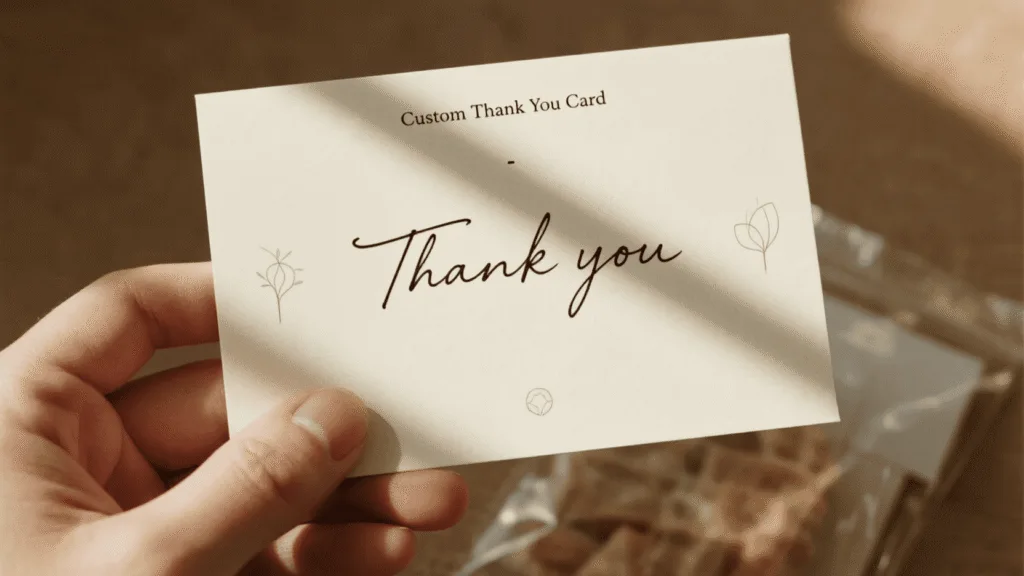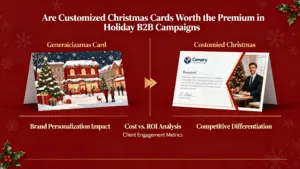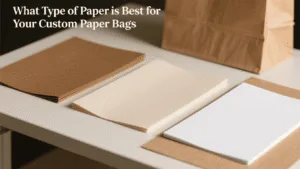Your business is growing, and you want to show appreciation. But in the rush to be efficient, you might send a quick thank-you email that gets lost in a crowded inbox, making zero impact.
Custom thank you cards pack significantly more emotional value than digital e-cards. Their physical, tangible nature requires personal effort, creating a memorable experience that makes the recipient feel genuinely seen and appreciated, which an email can rarely replicate.
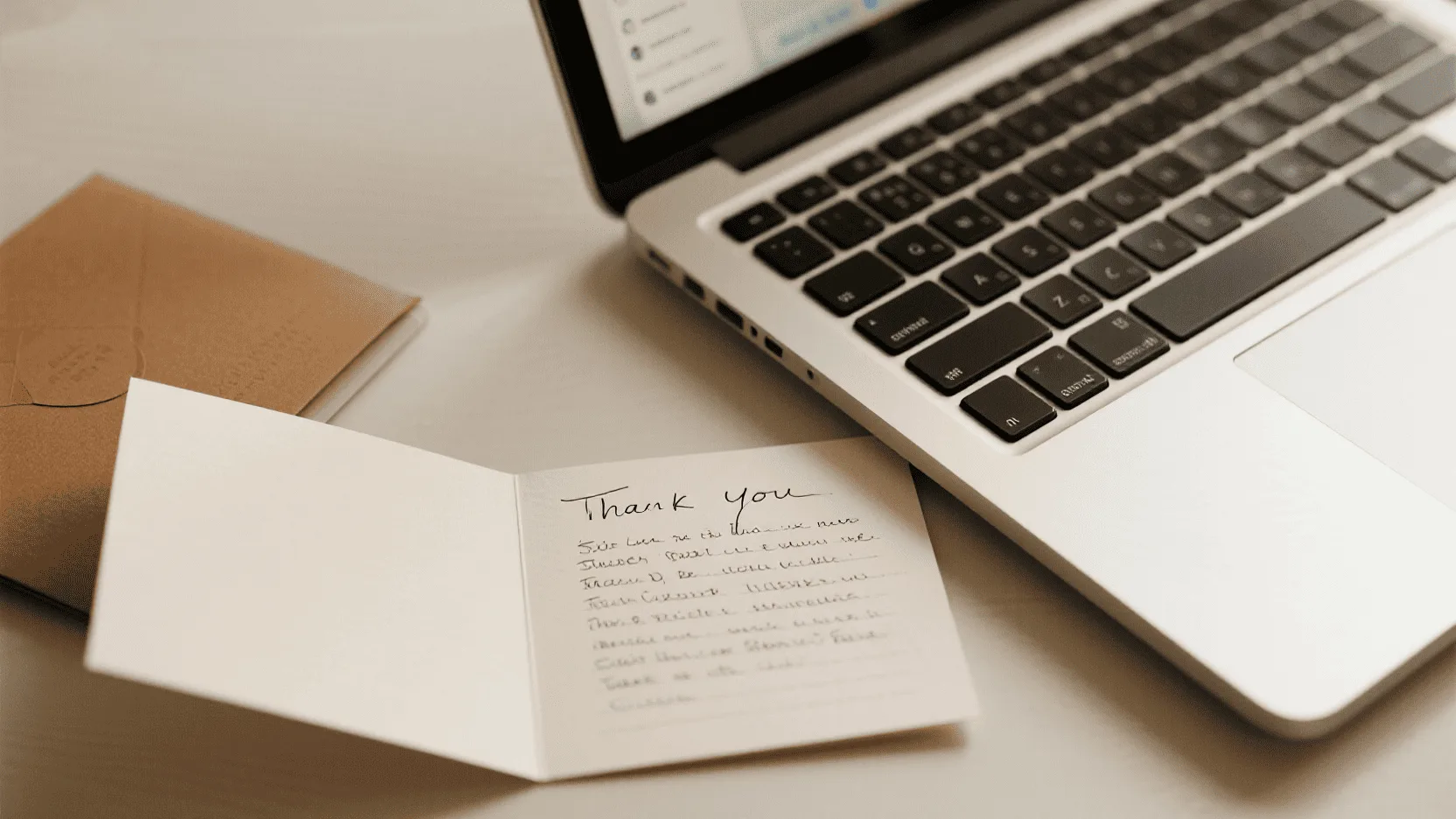
I have a small collection of notes I’ve kept over the years. Not one of them is an email. They’re all physical cards—a thank you from a client after a challenging project, a note from a mentor, a holiday card from a long-term partner. I remember the weight of the paper, the look of the ink. A few years ago, a client of ours, a small online boutique, was debating how to thank their top 100 customers. Their marketing team pushed for a slick, animated e-card with a discount code. It was fast and trackable. I suggested they try something different: a simple, beautifully printed card with a short, handwritten note from the founder. The cost was higher, and it took time. But the response was incredible. Customers posted photos of the cards on social media, tagged the brand, and wrote rave reviews. That simple, tangible gesture built more loyalty than a hundred flashy emails ever could.
Why Do Physical Thank You Cards Create a Stronger Connection?
You want your gesture of thanks to feel sincere, not like an automated marketing task. A digital message is efficient, but it’s also fleeting, easily deleted, and competes with hundreds of other notifications.
Physical thank you cards create a stronger connection because they are tangible objects that engage multiple senses. This sensory experience, combined with the clear signal of effort, makes the message feel more personal and significant, cutting through digital noise.
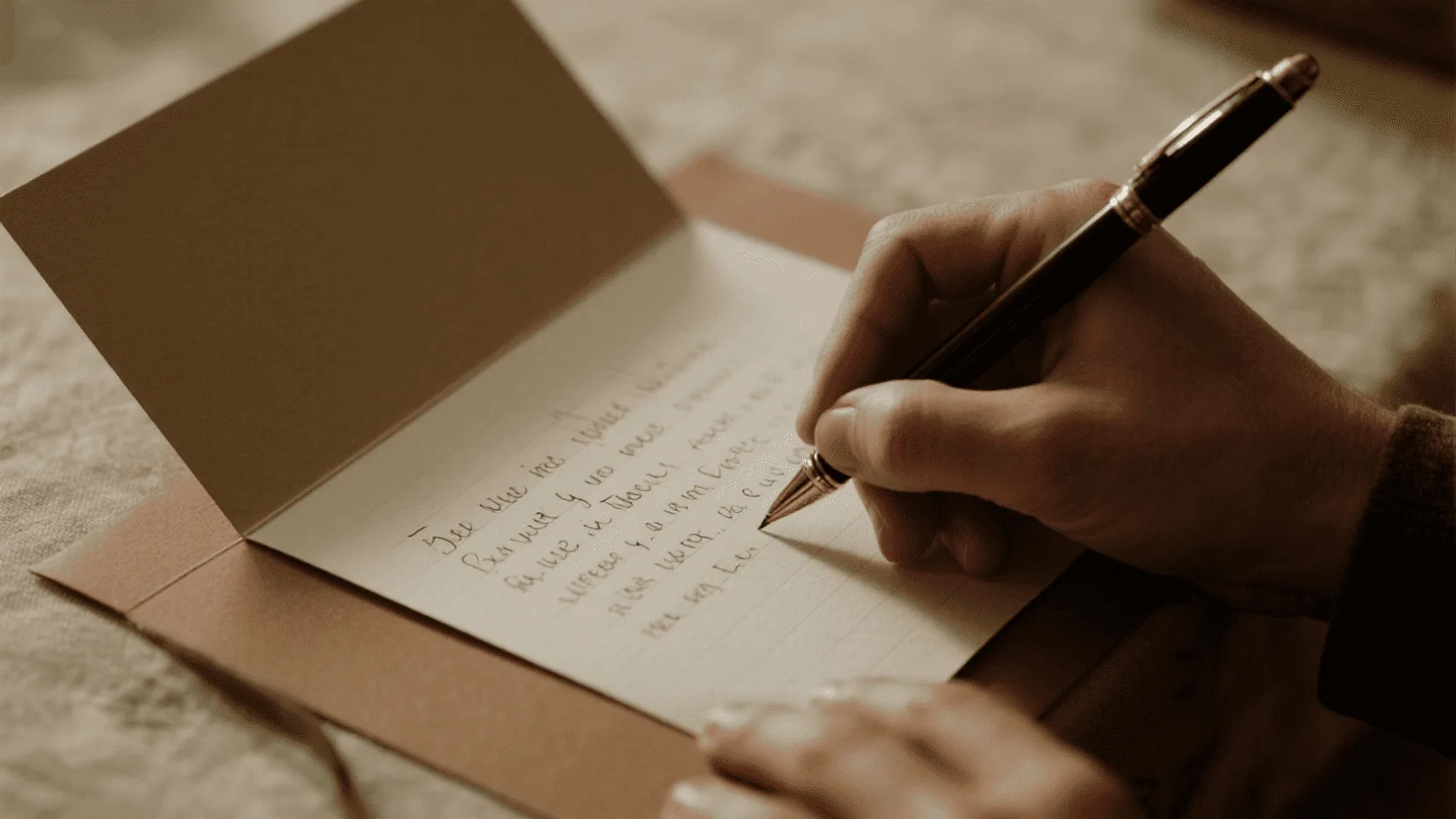
In a world filled with digital everything, something you can hold in your hand stands out. Psychologists call it the "endowment effect," a concept where people place a higher value on things they physically own (Source: The Decision Lab). An email exists only as pixels on a screen, but a card is a physical token of appreciation. Think about the experience: the texture of the paper, the slight indent from the printing, the visual appeal of the design. It’s a multi-sensory event. I once worked with a luxury jewelry brand that was meticulous about this. We selected a thick, cotton-based paper for their thank you cards because it had a substantial, premium feel. The simple act of receiving and opening that card became part of the luxury experience, reinforcing the value of their purchase. It wasn’t just a "thank you"; it was an extension of their brand’s promise of quality and care. This is something a digital message, no matter how well-designed, simply cannot do.
The Psychology of Tangibility and Effort
A physical object occupies space in the real world, making it more permanent in our minds than a digital file.
- Sensory Engagement1: The recipient touches the card, sees the design without a screen’s glare, and might even smell the ink or paper. This deepens the memory of the gesture.
- Signaling Investment2: A physical card costs money to produce and mail. It takes time to write, address, and send. This perceived effort tells the recipient that they were worth the investment, making the gratitude feel more authentic.
Extending the Brand Experience
For an e-commerce business, the customer’s physical interaction with the brand is often limited to the product and the shipping box.
- A Surprise and Delight Moment: A thank you card included in the package or sent separately is an unexpected touch that enhances the unboxing experience.
- A Lasting Reminder: Unlike an email that’s archived and forgotten, a beautiful card might be displayed on a desk or bulletin board, keeping your brand top-of-mind for weeks or months.
When Do Digital E-Cards Make More Sense for Your Business?
Your customer base is huge, and you need to acknowledge every transaction immediately. Trying to send a physical card to every single customer would be a logistical nightmare and financially impossible.
Digital e-cards are the logical choice for immediate, automated, and large-scale communication. They excel in situations where speed, cost-effectiveness, and the ability to track engagement are the highest priorities for the business.
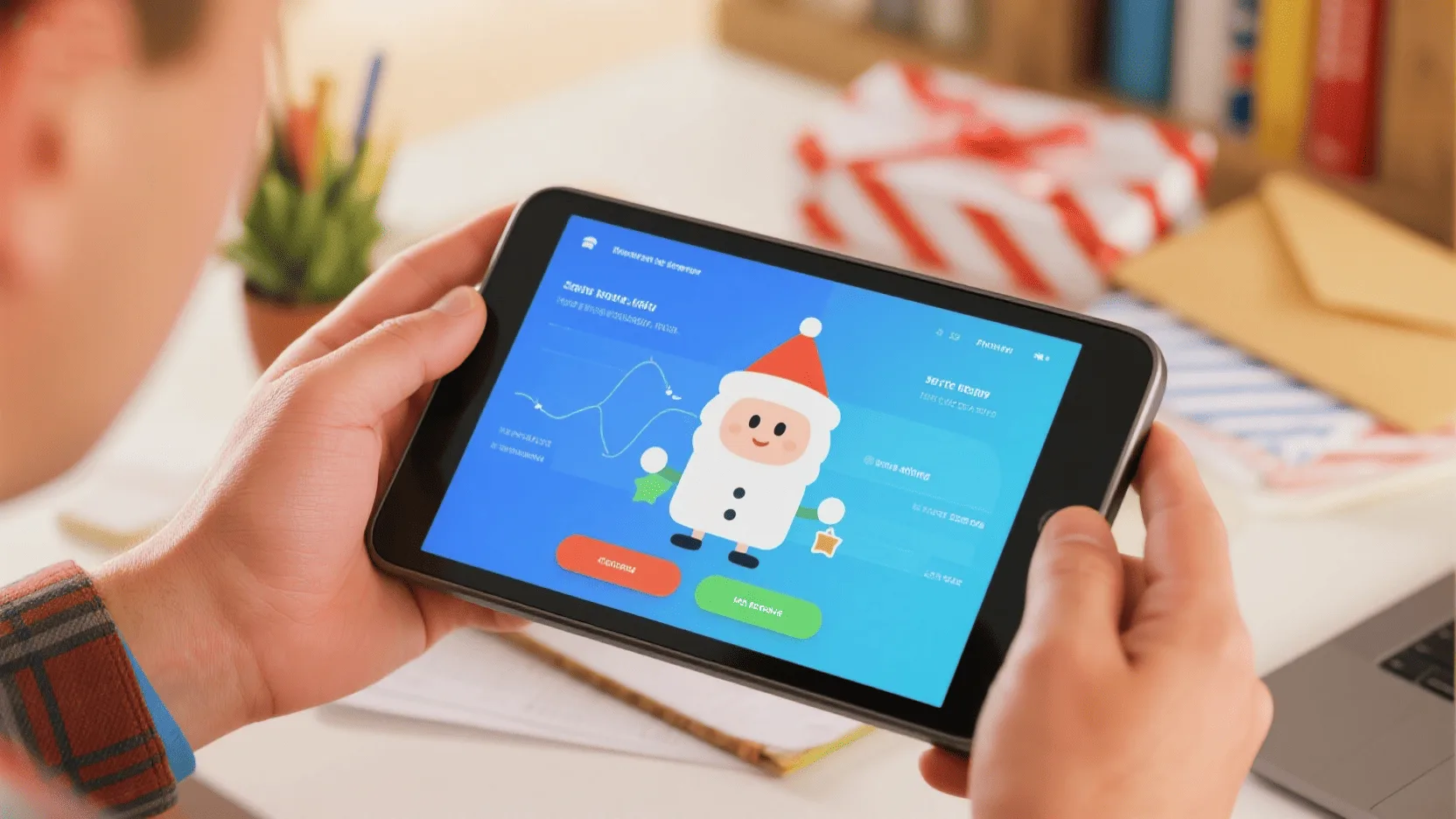
While I’m a huge advocate for the power of print, I’m also a practical business owner. We use digital communication every single day. A few years back, we helped a client who runs a subscription box service. They have thousands of subscribers, and their goal was to confirm orders and thank customers instantly. For them, an automated thank you e-card was the perfect tool. It provided immediate reassurance that the order was received. More importantly, they embedded a link in the e-card asking customers to review their purchase. The click-through rate was fantastic because the request arrived when the excitement was still fresh. They were able to generate thousands of reviews in a matter of months, which was a huge boost for their marketing. In this scenario, a physical card would have been too slow and too expensive to be effective. It’s about choosing the right tool for the right job.
The Advantages of Speed and Scalability
The primary strengths of digital communication are its immediacy and reach.
- Instant Delivery1: An e-card can be triggered to send the moment a customer completes a purchase, providing instant gratification and confirmation.
- Mass Communication: You can send a thank you message to your entire customer list of 100,000 people with a few clicks, making it ideal for holiday greetings or company-wide announcements.
Cost-Effectiveness and Data Analytics
Digital methods offer clear financial and analytical benefits.
- Low Cost: There are no printing, material, or postage costs, making the per-unit cost virtually zero.
- Trackable ROI2: You can track open rates, click-through rates on any included links (like a discount for a future purchase), and directly measure the campaign’s effectiveness.
| Feature | Custom Physical Card | Digital E-Card |
|---|---|---|
| Emotional Impact | High | Low to Medium |
| Perceived Effort | High | Low |
| Cost Per Unit | Medium to High | Very Low |
| Speed of Delivery | Slow (Days) | Instant |
| Scalability | Low | High |
| Trackability | Low (Indirect) | High (Direct) |
| Best For | Building deep loyalty, high-value clients | Immediate confirmation, mass communication |
How Can You Combine Both for a Winning Strategy?
You feel stuck choosing between the high emotional impact of physical cards and the efficiency of digital e-cards. Sticking to just one method means you’re missing opportunities to connect with your customers in the most effective way.
The most powerful approach is a hybrid strategy: use digital e-cards for broad, immediate acknowledgments and reserve high-impact custom physical cards for specific segments like high-value customers, celebrating milestones, or for heartfelt service recovery.
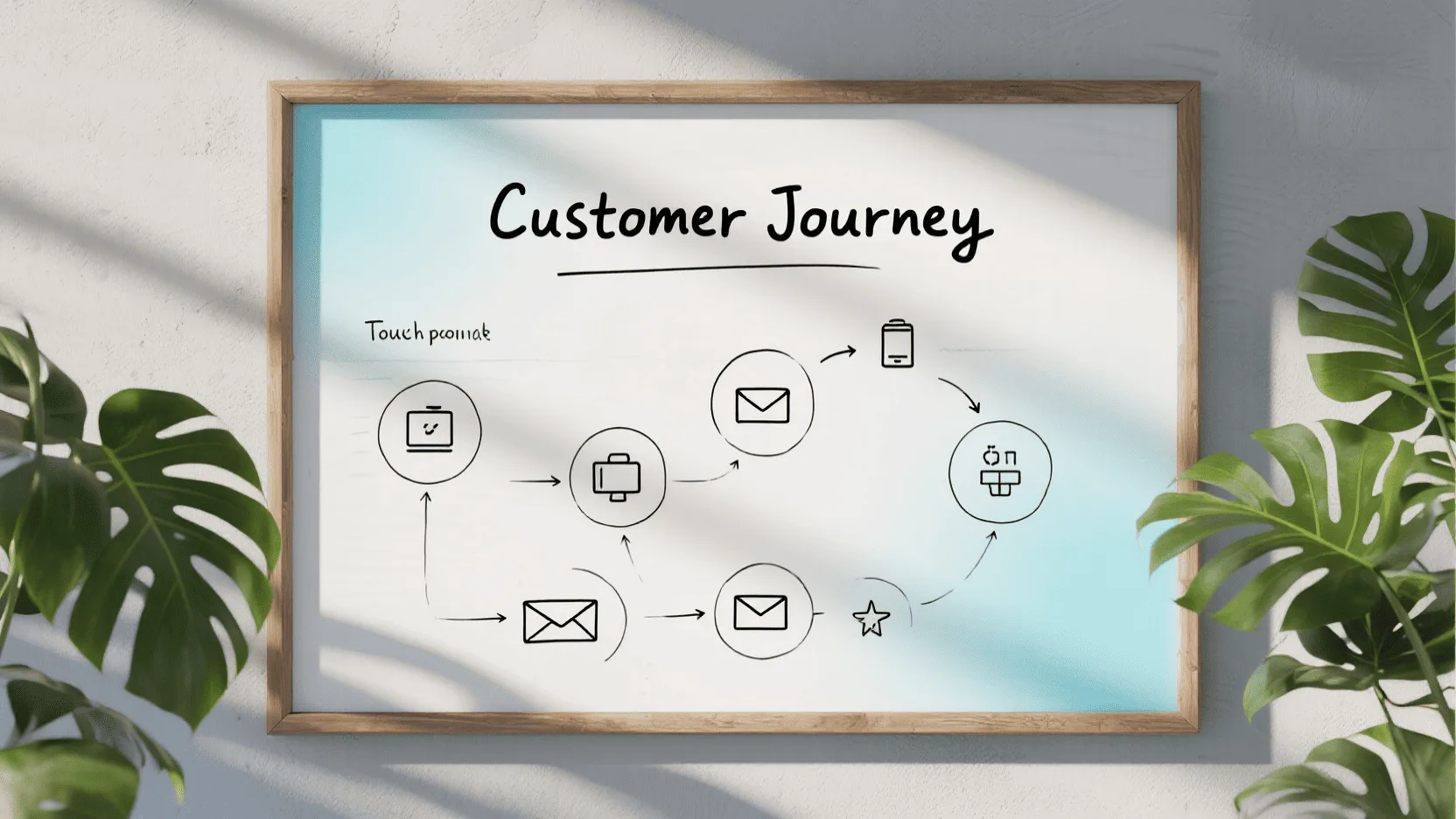
The smartest brands I see don’t choose one or the other; they use both strategically. Think about it like a conversation. Some parts of a conversation are quick and functional, like a text message (the e-card). Other parts are deep and meaningful, like a face-to-face talk (the physical card). One of our e-commerce clients has this down to a science. When a customer makes their first purchase, an automated thank you e-card is sent immediately. It’s polite and efficient. But when a customer makes their third purchase, a trigger is sent to a fulfillment service. That customer then receives a beautiful, branded gift box with a high-quality thank you card signed by the team. They use the efficient digital method for everyone but save the high-effort, high-impact physical touch for customers who have demonstrated loyalty. This tiered approach makes their best customers feel truly special and reinforces their decision to stick with the brand. It transforms customer appreciation from a simple task into a sophisticated retention strategy.
Segmenting Your Audience for Maximum Impact
Not all customers are the same, so your appreciation shouldn’t be either.
- Automate for All1: Use an e-card to thank every customer after every purchase. It’s good practice and sets a baseline of appreciation.
- Elevate for VIPs: Identify your top customers (by purchase frequency, total spend, or referrals) and send them a physical card once or twice a year. This makes them feel like insiders.
Creating a Multi-Touchpoint Journey
Use both methods to reinforce your message over time.
- The One-Two Punch: Send an instant e-card, then follow up a week later with a physical card in the mail. The surprise second touchpoint can be incredibly powerful.
- Service Recovery2: After a customer service issue, an email apology is the first step. Following up with a handwritten card and a small gift shows you are truly sorry and committed to making things right.
Conclusion
While digital e-cards offer unmatched speed and scalability, custom physical cards remain the champion of emotional value. In a world of fleeting digital messages, a tangible note of thanks creates a lasting, meaningful connection that builds true brand loyalty. The best strategy often uses both in harmony.
Ready to create a tangible connection with your customers? Explore our custom greeting card options or contact us today to discuss how physical media can elevate your brand.
FAQ
Are handwritten notes really necessary on business thank you cards?
While a well-designed printed card is already effective, a short, handwritten note personalizes the gesture immensely and significantly boosts its emotional impact. Even just signing your name by hand makes a difference.
What is the ROI on sending physical thank you cards?
Direct ROI is difficult to track, but it’s measured in increased customer lifetime value, higher repeat purchase rates, and positive word-of-mouth marketing. Think of it as an investment in customer relationship building, not a direct sales tool.
In today’s digital world, isn’t sending a physical card a bit old-fashioned?
Quite the opposite. Because so few companies do it, receiving a physical card is a powerful "pattern interrupt." It cuts through the digital clutter and makes your brand memorable precisely because it is a classic, thoughtful gesture.
How much should a business budget for custom thank you cards?
The cost can range from less than a dollar to several dollars per card, depending on paper quality, printing techniques, and quantity. A good rule of thumb is to weigh the cost against the lifetime value of the customer you are thanking.

